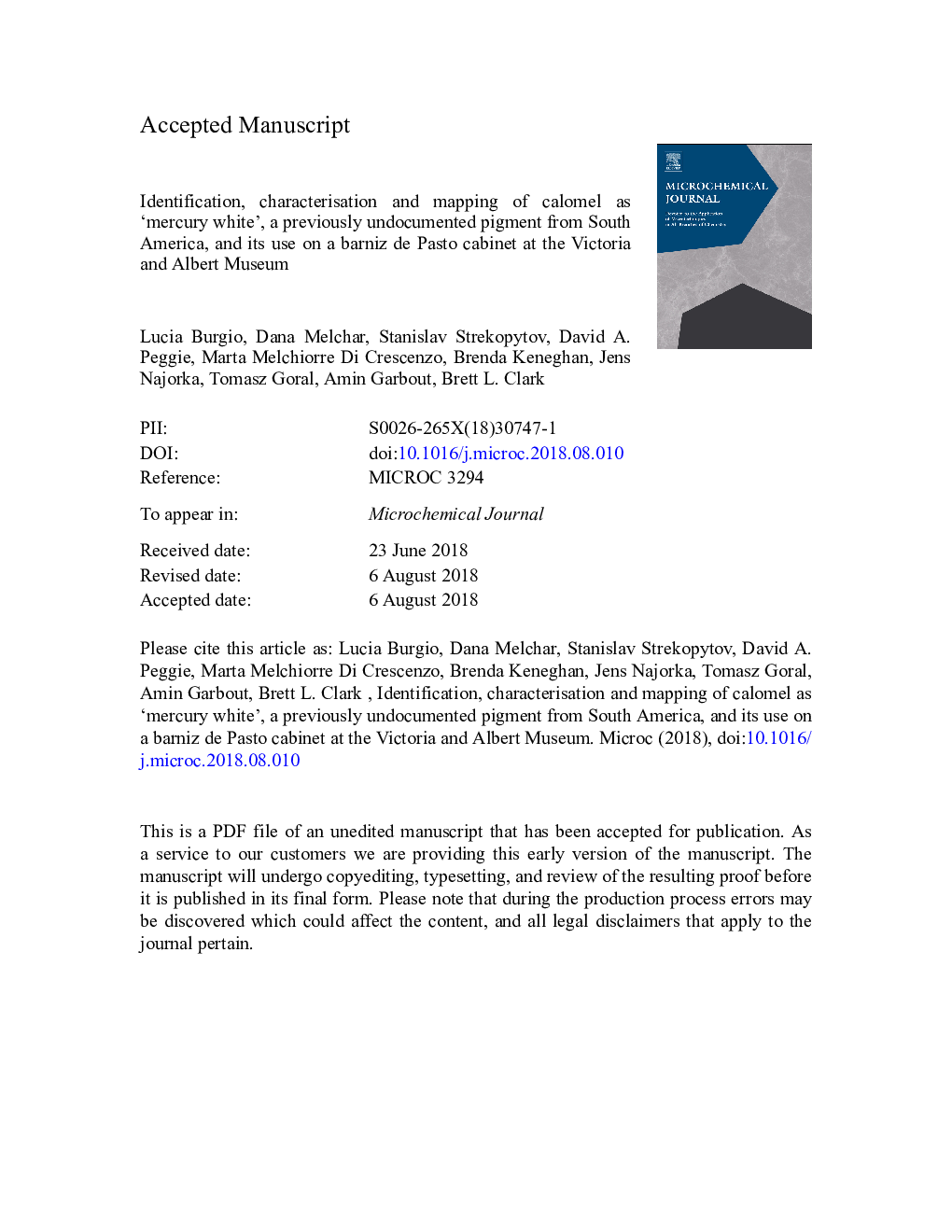| Article ID | Journal | Published Year | Pages | File Type |
|---|---|---|---|---|
| 7639943 | Microchemical Journal | 2018 | 21 Pages |
Abstract
An investigation into the materials and manufacturing techniques of a rare table cabinet decorated using the barniz de Pasto technique led to the discovery that calomel, mercury(I) chloride Hg2Cl2, had been used extensively and deliberately as the white pigment of choice. Analysis of the decorative scheme of the cabinet using micro-destructive and non-destructive techniques, such as X-ray fluorescence, Raman microscopy, micro-computed X-ray tomography and micro-X-ray diffraction, provided conclusive evidence regarding the identity, distribution and characteristics of this 'mercury white' pigment. To the best of our knowledge, this is the first documented instance of the intentional use of calomel as a pigment on a cultural heritage object. The investigation also revealed a design on the inner surface of the lid, concealed below a 20th century scheme. The rediscovery of this radical element in a substantially intact state provides grounds to investigate the complete removal of overpaint so as to restore the decorative integrity of the cabinet and permit a full appraisal of its complex iconographic scheme.
Related Topics
Physical Sciences and Engineering
Chemistry
Analytical Chemistry
Authors
Lucia Burgio, Dana Melchar, Stanislav Strekopytov, David A. Peggie, Marta Melchiorre Di Crescenzo, Brenda Keneghan, Jens Najorka, Tomasz Goral, Amin Garbout, Brett L. Clark,
